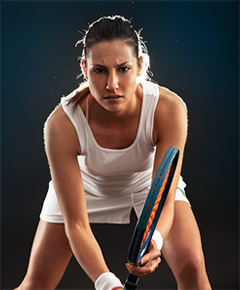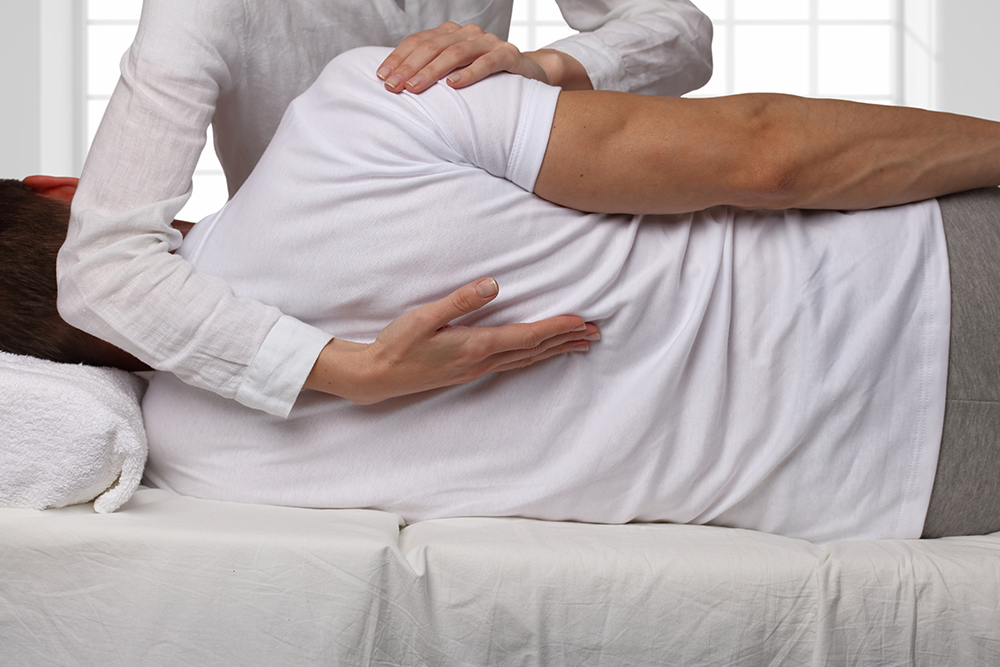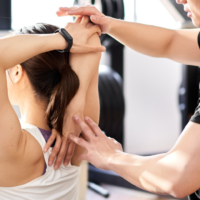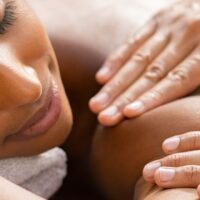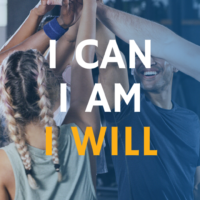Expert Corner: Shari Essnaashari on an Osteopathic Approach to Injury
Meet Sherry
Sherry Essnaashari is a certified Osteopath (D.O.M.P.) and holistic practitioner. Her areas of specialty include nervous system disorders, skeletal and hormonal issues. Sherry conducts ongoing wellness seminars and is eager to empower her clients to attain optimal health. She works with corporations to provide them with customized wellness programs.
What Is Osteopathy?
Osteopathy is a manual therapy which emphasizes the relationship between the structure and function of the human body. It is focused on restoring the body’s natural balance and providing overall good health and optimal function.
Osteopathy has long been in existence. Much like physiotherapy and chiropractic, osteopathy aims to improve health and wellness through non-invasive manual therapy.
It works on the premise that our structure can get compromised through life style patterns, injuries and posture. Manual Osteopaths look at the relationship between structure of the body and the way the body is functioning. We also consider organ functions, which is a branch called visceral osteopathy. Manual Osteopaths are also interested in improving the circulation of intracellular and extracellular bodily fluids and liquids. The work conducted can encompass cranial sacral techniques. Gentle palpation movements on the cranium, spine, pelvis and other areas that are blocked are used to improve the functions of the central nervous system.
Who Would Benefit From Osteopathic Treatment
People who have experienced depression, anxiety, concussions, headaches or trauma have benefited greatly from osteopathic treatments. In addition, I treat clients for sports related and repetitive strain injuries, spinal problems, degenerative joint disease (known as arthritis), nerve complaints, like sciatica, organ/hormonal issues, TMJ, and problems with extremities.
Treating Shoulder Injuries with Osteopathy
Shoulder complaints can include the following problems with rotator cuff, muscle tears or frozen shoulder.
When examining complaints of the shoulder, Shari considers other areas within the scope of practice. The work is not isolated to the location of pain. Manual Osteopaths regard the whole body. Osteopathy is very much a holistic approach to health. While the pain might have a clear site, the origin of the pain may well be on the opposite side of the body or related to an organ. Most shoulder damage can be attributed to an imbalance in the tension between the muscles surrounding the shoulder. The shoulder joint itself is a susceptible area of complaint, due to the fact that it’s a junction point in connecting parts of the body. Wherever there is a junction there is a likelihood for tension.
Sometimes pain in the upper arm is felt when the arm is lifted or when using or lying on the muscles. There may also be pain that extends around the deltoid region. This may be linked to rotator cuff problems or could be connected to other shoulder or neck injuries that are acute or chronic.
Rotator Cuff Injuries
The rotator cuff consists of subscapularis, supraspinatus, teres minor and infraspinatus muscles deep within the shoulder. These four muscles help the shoulder function properly. They can be impacted through overuse, tears or acute injuries. They can be susceptible to getting injured.
To treat the rotator cuff in an acute situation, it’s important to rest and ice the area so as to reduce inflammation. Shari’s treatments of rotator cuff have included using various mobilization techniques, along soft tissue therapy and muscle energy to strengthen the area, decrease pain and improve mobility.
Muscles Tears
Muscle tears can also cause shoulder pain and could be related to repetitive strain, or muscles being overstretched. Usually the most common muscle shoulder tear is the supraspinatus muscle. When seeing a manual osteopath for a shoulder tear, the treatment would work around the whole shoulder joint, to help increase the range of motion and circulation, as well as to identify areas of weakness or restriction. Using soft tissue techniques, muscle energy techniques and joint mobilization, the areas in question are built up again and stabilized. Additional exercises may also be recommended, along with a treatment plan.
Frozen Shoulder
Frozen shoulder is another area commonly treated through manual osteopathy. In these cases, clients may present with shoulder stiffness and pain. Because these symptoms impact body mechanics, an Osteopath may focus on loosening the areas so that the person can have increased range of motion. As well, an Osteopath would aim to reduce shoulder pain and stiffness. Other areas of the body will also be treated to help overall balance and recovery.
Treating Knee Injuries with Osteopathy
For complaints of the knee, ankle mobility, as well as the health of your back, hips and pelvis is considered. In addition, an Osteopath would evaluate your medical history and regard factors not directly related to your current chief complaints, such as level of activity or nutrition.
Knee complaints may include pain, inflammation, damage to cartilage or stiffness. Many factors can result in knee complaints. Some include injuries, overuse, cartilage damage, tears, degenerative joint disease (osteoarthritis), gout, autoimmune conditions, like M.S. or Rheumatoid Arthritis. Affected knee areas could be ligament, joint, tendon, cartilage, tissue, or muscle.
Overall, the knee is one of the most commonly injured joints in the body. It is a vital joint in allowing for proper movement. Working with the ankles and hips, the knee is crucial in supporting the body when sitting, walking or standing. When the knee is injured, it is important to address it and to find an effective and relevant treatment plan. Avoiding the issue can have further implications on quality of life. Manual osteopathy addresses knee complaints and helps to prevent long term issues, like osteoarthritis.
Injuries to the ligaments are often a result of sports activities, where there is overextension and twisting of the knee. Of the four knee ligaments, the ACL (anterior cruciate ligament) is a common point of injury. The ACL stabilizes the knee and the tibia. The patella is another area that can be addressed through osteopathy. Patella issues can cause wear and tear under the knee cap and there may be creaking sound in the joints. Typically, deep squats and inclines may trigger pain.
Another potential injury point could involve the meniscus. Tears in the meniscus can happen with repeated activities that involve rotating the knee joint. Symptoms may include swelling, locking of the knee or the knee giving out. Sometimes, other areas around the knee are the chief complaint. For example, the hamstring muscle has impact on how the knee and hips move. The psoas muscle can create restriction in knee mobility. Foot problems are another common area of concern when assessing knee complaints. Foot issues may be related to limitations in the back, hips or pelvis, all of which would be assessed in an osteopathic treatment.
The treatment would encompass increasing range of motion of the joints and helping to strengthen muscles and overall flexibility. Because osteopathy considers the relationship between structure and function, the treatments work to trigger the body’s own self healing and self-regulating process.
Benefits of Osteopathic Treatments
In the long run, manual osteopathy can help to ease pain, increase mobility and range of motion, allowing you to be freer in your movements. Manual osteopathy is a treatment choice covered by most insurance plans and has the following benefits:
- Chronic and acute pain relief
- Reduces anxiety and stress
- Reduces inflammation and restrictions
- Improves strength, mobility, functionality and flexibility
- Improves system circulation by promoting self-healing
- Supports overall wellness
- Holistic treatment for all ages
Sherry Essnaashari is a Wellness Consultant. She is a licensed Manual Osteopath (D.O.M.P), and certified Reflexologist at Lakeshore Mayfair. To book your appointment, please contact the Wellness Spa at (416) 466- 3704.
Recent Facebook Posts
Newsletter
Sign up
Join our Mayfair Newsletter for the latest member news, events, contests, promotions and blogs. You may unsubscribe at anytime by clicking the "unsubscribe" link at the bottom of all newsletter emails.
 Lakeshore (416) 466-3777
801 Lake Shore Blvd E Toronto, ON Lakeshore and DVPs
Lakeshore (416) 466-3777
801 Lake Shore Blvd E Toronto, ON Lakeshore and DVPs
 West (416) 638-1010
3855 Chesswood Dr Toronto, ON Sheppard and Dufferin
West (416) 638-1010
3855 Chesswood Dr Toronto, ON Sheppard and Dufferin
 Parkway (905) 475-0350
50 Steelcase Rd. E. Toronto, ON Woodbine and Steeles
Parkway (905) 475-0350
50 Steelcase Rd. E. Toronto, ON Woodbine and Steeles
 East (905) 475-8833
160 Esna Park Dr Markham, ON Denison and Victoria Park
East (905) 475-8833
160 Esna Park Dr Markham, ON Denison and Victoria Park

